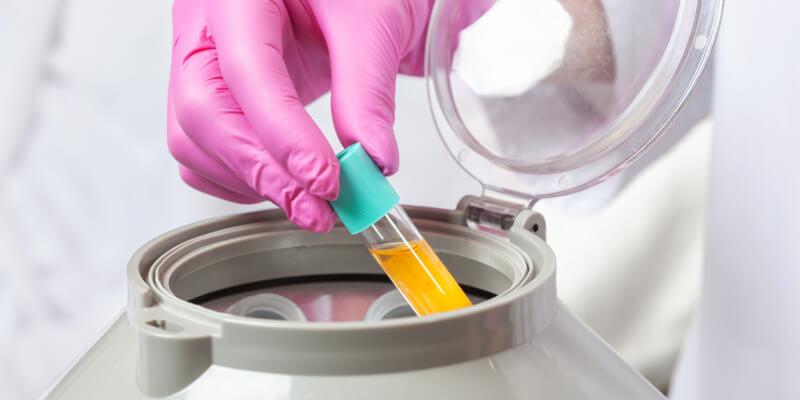Most patients suffering from hair thinning become wary about trying different hair loss treatments – they worry that any procedure might exacerbate their condition and lead to complete hair loss. Even platelet-rich plasma therapy, an effective treatment involving injections of growth factors into the scalp to stimulate hair growth, isn’t an exemption. Some patients become apprehensive about the stages that the treatment needs to undergo, including hair shedding.
So can you get thin hair after PRP treatment for hair loss? Yes, your hair will become thin temporarily after your initial treatment as it enters the shedding phase. Patients will experience hair shedding because the healing factors from the injections activate hair growth. This temporary hair loss is caused by the new thicker hair strands replacing the thinner and more brittle ones, as more hair follicles mean healthier hair is restoring old hair strands.
Will You Experience Hair Loss After PRP Injections for Hair Growth?
Patients of platelet-rich plasma therapy for hair regrowth typically lose their hair for a few weeks after receiving their initial injections. Most patients become anxious about this, but hair shedding is part of the process – it only means that the procedure is working. It’s a common phase not only with PRP therapy but also with other solutions for different types of hair loss.
Hair thinning due to hair loss is common after receiving your first PRP injections because the concentrations of platelets reset the hair cycle and activate dormant hair follicles to enter the growth phase.
Patients usually become anxious during this phase, but this only lasts for about 2 to 4 weeks — they may expect to enter this stage 6 weeks after the initial injections, until the 8th to 10th week. While this should be nothing to worry about, it’s still best to consult your doctor and do regular check-ups.
Your scalp will be scanned to keep track of improvements. Patients worrying about hair thinning become more at ease once these tests usually reveal significant improvements.
Why You Experience Hair Shedding After Your PRP Injections

Patients with hair loss experience hair shedding after their PRP injections because of the cycle of hair growth and how the treatment works.
There are many causes of hair loss, but most of these boil down to hair follicles weakening due to damaged stem cells. These hair follicles turn dormant until they shrink and no longer grow hair, affecting the cycle of hair growth.
The hair follicles in your scalp go through different cycles all at once – some of them in a growing phase, while some are dormant. Once your scalp receives a boost of nutrients from PRP injections, they prompt hair follicles to grow stronger and healthier hair. As a result, these hair follicles activate hair growth, even if they’re in a different phase. The new hair strand pushes out the old one.
There are rare instances as well where platelet-rich therapy isn’t a suitable treatment for a patient. The reason may be due to their type of hair loss, underlying medical history, or any other factor. As a result, the PRP treatment speeds up their loss of hair.
To avoid this and other major side effects, seek a reliable aesthetic clinic that delivers a thorough screening to ensure a patient’s candidacy. The medical professionals must also check up on the patient’s status regularly throughout the treatment cycles.
How PRP Injections Work
Platelet-rich plasma therapy is a type of regenerative medicine involving injections of growth factors into different areas of the body for a focused boost of the healing process. Aside from its cosmetic purpose, it’s also used to treat different types of medical conditions.
As one of the most celebrated treatment options for hair restoration, it can address the following conditions:
- androgenetic alopecia or male or female pattern baldness
- patchy hair loss
- progressive hair loss
PRP for hair restoration works the best with patients in the early stages of hair loss–those with complete hair loss or who had been bald for a long time may not receive the best results. That’s why it’s best to receive PRP injections once patients have noticed early signs of the condition, such as hair thinning.
PRP is harvested from the patient’s own blood sample, offering little to no risks of an allergic reaction. After a blood draw, the sample will then be processed in a centrifuge to separate plasma and platelets from other blood cells.
Plasma is the protein that acts as the liquid portion of the blood, while the platelets are the cells responsible for the body’s regenerative abilities, like tissue repair and wound healing. A concentration of platelets can activate the hair growth cycle by boosting cell growth and increasing the stem cells – these will help speed up the regeneration of dormant hair follicles. This also widens the blood vessels and improves blood flow, which results in hair follicles receiving more nutrients and oxygen from the body and promoting hair growth.
Reasons Why Your Hair Sheds Post-Treatment
Patients with hair loss can expect hair shedding after their initial PRP treatment. This is usually caused by activating hair growth, so new hair grows. Another rare reason is that your injection resulted in major side effects and has sped up your genetic hair loss.
1) New Hair Growing
PRP injections may awaken dormant hair follicles to grow new hair – the thicker and healthier new hair strand pushes the old and brittle hair. Hair follicles undergo a hair cycle, and not all of them are the same all at once. This is evident in the way that we all shed hair every day, with or without hair loss treatments.
A hair follicle undergoes a cycle:
- Anagen phase (growing phase) – the hair follicle grows hair from dermal papilla and hair bulb rapid cell division, lasting 3 to 10 years
- Catagen phase (regressing phase) – the hair follicle transitions to dormancy, and the cell division stops, lasts for 2 to 3 weeks
- Telogen phase (resting phase) – the hair follicles are in a dormant state that lasts for around 3 to 4 months
- Exogen phase (shedding phase) – old hair sheds, lasting for around 2 to 5 months, while new hairs grow in the follicles.
Most hair follicles are stuck in the telogen phase when patients experience hair thinning and hair loss. Once they’ve received growth factors, they will reawaken and switch to the anagen phase. They’d have to shed the old hair first, which is why patients shed hair.
2) Genetic Hair Loss Speeding Up
PRP injections may also worsen an underlying type of hair loss, usually related to an autoimmune disease. The treatment sometimes triggers telogen effluvium – when hair follicles stay at the telogen phase and don’t move on to the anagen phase. The good thing is that this adverse effect happens rarely.
This can be easily avoided by seeking a reliable service provider who can thoroughly screen every patient’s candidacy for PRP treatment.
How to Ensure Positive Results from PRP Hair Treatment

Hair shedding is pretty common among patients of PRP treatment for hair restoration. If they want to ensure positive results from this procedure, there are also other ways they can do it. These involve eating more greens and food rich in B-vitamins, doing regular exercise, leading a clean lifestyle, and using at-home hair treatments.
1) Eat More Greens and B-Vitamins
PRP therapy needs a stable number of healthy platelets, which is why patients must incorporate more greens and food rich in B-vitamins into their diet. Some may struggle with eating green leafy vegetables, but it’s beneficial for their PRP treatment.
These types of food increase hemoglobin and red blood cells. They also increase immunity, improve blood circulation, and regulate hormones. It’s also best to limit the consumption of fatty, salty, and sugary food.
2) Do Regular Exercise
Lead a more active lifestyle, and for improving your PRP results, it’s best to do more high-intensity cardio exercises. These types of routines improve the production of your red blood cells and boost your immune system.
3) Lead a Clean Lifestyle
Patients wanting to have the best results from their PRP treatment should limit, if not avoid, smoking or doing drugs. Tar from cigarettes affects the production of stem cells, which can reduce the results of your PRP therapy.
4) Ask Prescription for At-Home Hair Treatments
Consult your doctor about the right hair treatments you can take at home to boost the effects of your PRP treatment. They may prescribe minoxidil, oral finasteride, serums, or herbal hair growing shampoos.
5) Follow Post-Treatment Care
Aftercare is just as important as the procedure itself because this will assure the positive results of your treatment. Ensure following post-treatment protocols carefully.
Visit FACE Med Store for High-Quality Beauty and Medical Supplies
Patients usually feel anxious about hair thinning after their PRP therapy, but this is normally part of the process and will only be temporary. Those experiencing anxiety after their PRP treatment may go to follow-up consultations to learn more about the process of their procedure and be more informed about its progress.
Patients will be more reassured with esthetic clinics that use high-quality medical supplies. FACE Med Spa has always been a reliable supplier of the best needs for cosmetic and medical treatments. Visit our online store today to see our updated catalog.






